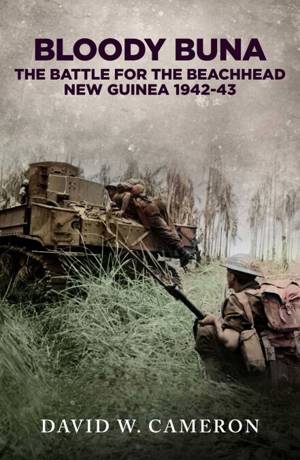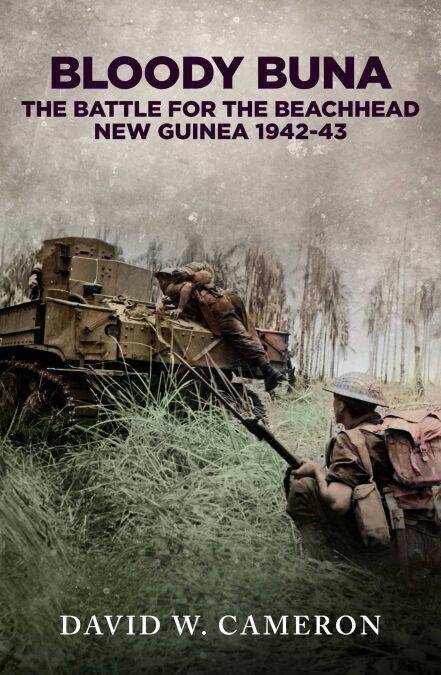
- Retrait gratuit dans votre magasin Club
- 7.000.000 titres dans notre catalogue
- Payer en toute sécurité
- Toujours un magasin près de chez vous
- Retrait gratuit dans votre magasin Club
- 7.000.0000 titres dans notre catalogue
- Payer en toute sécurité
- Toujours un magasin près de chez vous
16,76 €
+ 16 points
Description
With the Australian troops crossing of the Kumusi River in mid-November, after pushing the Japanese back along the Kokoda Track, the time had come to face the entrenched Japanese at their beachhead at Gona, Sanananda and Buna.
The end of the Kokoda Campaign in mid-November 1942 marked a turning point for the Australians, but the fighting was far from over. Within days, the battles for the three Japanese beachheads would commence. These battles where the first combined large-scale operation between Australian and American troops against the Japanese and would prove to be among the fiercest of the Pacific War.
At Buna, the final battles to take 'New' and 'Old' air strips by the Australians, along with the ongoing American attacks to take the infamous 'Triangle,' proved to be a brutal and deadly bloodbath for all concerned. Amidst the crocodile-infested swamps and lowland jungle with dozens of Japanese bunkers and pillboxes with supporting artillery, the Australians who fought at all three beachheads faced an unprecedented toll, suffering more killed or wounded than in any other campaign of the Pacific war.
In the face of relentless combat, the Allied forces at Buna suffered staggering casualties, with 2817 men lost at Buna. The American 32nd Division sustained 1954 casualties, including 353 killed (18%), 1508 wounded, and 93 missing amounting to around 40 per cent casualties over a six week period. The Australian 18th Infantry Brigade and supporting elements suffered 863 casualties, with 267 killed (31%), 557 wounded, and 39 missing amounting to around 60 per cent casualties over just three weeks of fighting.
As the battle raged on, the Japanese suffered significant losses, with a minimum of 1390 men killed at Buna. The true number of their dead, lost in history, is likely much higher, with conservative estimates suggesting around 3000 fatalities.
“Bloody Buna" sheds light on the untold sacrifices and heroism displayed by the Australian and American troops as they clashed with the Japanese in one of the most vicious chapters of the Pacific War.
The end of the Kokoda Campaign in mid-November 1942 marked a turning point for the Australians, but the fighting was far from over. Within days, the battles for the three Japanese beachheads would commence. These battles where the first combined large-scale operation between Australian and American troops against the Japanese and would prove to be among the fiercest of the Pacific War.
At Buna, the final battles to take 'New' and 'Old' air strips by the Australians, along with the ongoing American attacks to take the infamous 'Triangle,' proved to be a brutal and deadly bloodbath for all concerned. Amidst the crocodile-infested swamps and lowland jungle with dozens of Japanese bunkers and pillboxes with supporting artillery, the Australians who fought at all three beachheads faced an unprecedented toll, suffering more killed or wounded than in any other campaign of the Pacific war.
In the face of relentless combat, the Allied forces at Buna suffered staggering casualties, with 2817 men lost at Buna. The American 32nd Division sustained 1954 casualties, including 353 killed (18%), 1508 wounded, and 93 missing amounting to around 40 per cent casualties over a six week period. The Australian 18th Infantry Brigade and supporting elements suffered 863 casualties, with 267 killed (31%), 557 wounded, and 39 missing amounting to around 60 per cent casualties over just three weeks of fighting.
As the battle raged on, the Japanese suffered significant losses, with a minimum of 1390 men killed at Buna. The true number of their dead, lost in history, is likely much higher, with conservative estimates suggesting around 3000 fatalities.
“Bloody Buna" sheds light on the untold sacrifices and heroism displayed by the Australian and American troops as they clashed with the Japanese in one of the most vicious chapters of the Pacific War.
Spécifications
Parties prenantes
- Auteur(s) :
- Editeur:
Contenu
- Nombre de pages :
- 440
- Langue:
- Anglais
Caractéristiques
- EAN:
- 9781923004719
- Date de parution :
- 02-01-24
- Format:
- Ebook
- Protection digitale:
- Adobe DRM
- Format numérique:
- ePub

Les avis
Nous publions uniquement les avis qui respectent les conditions requises. Consultez nos conditions pour les avis.






